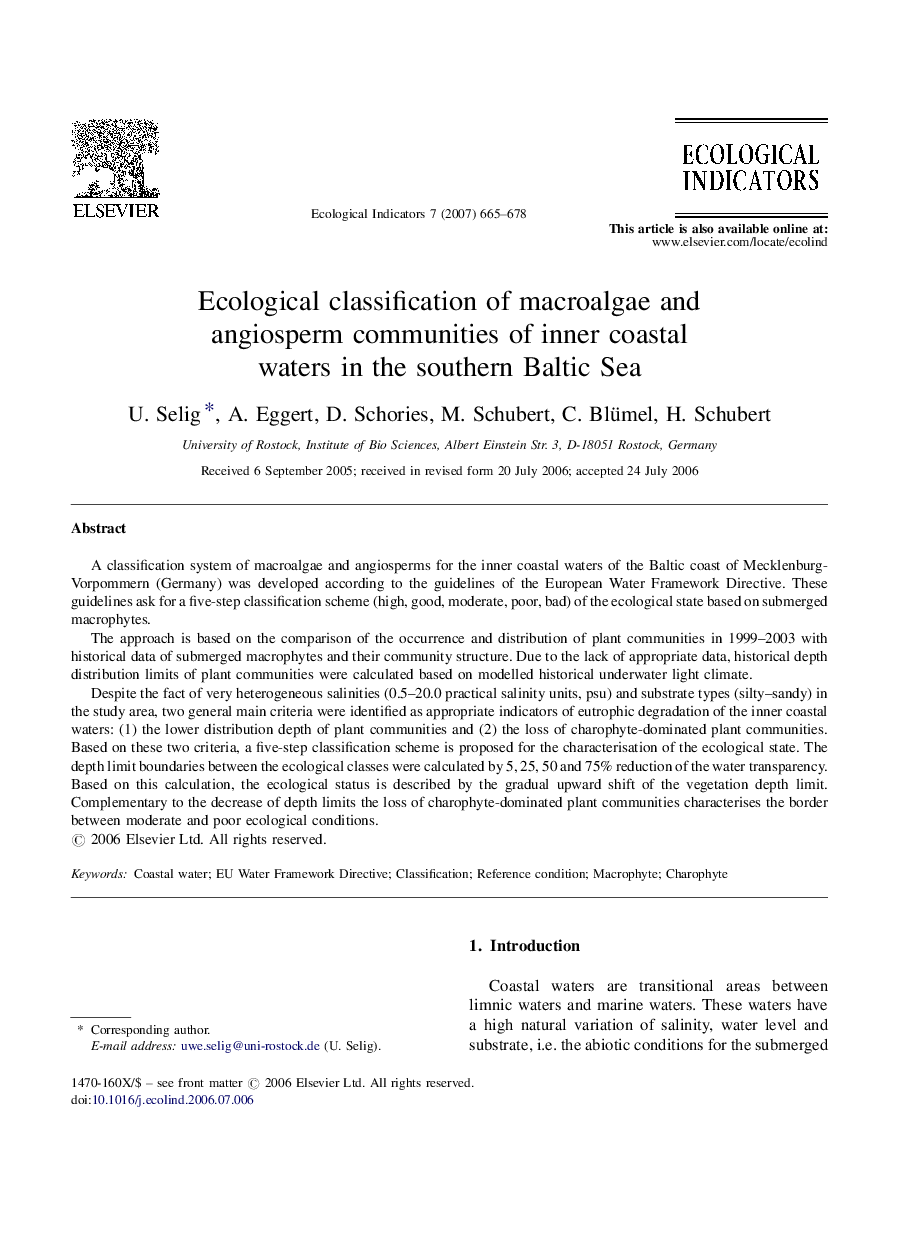| Article ID | Journal | Published Year | Pages | File Type |
|---|---|---|---|---|
| 4374677 | Ecological Indicators | 2007 | 14 Pages |
A classification system of macroalgae and angiosperms for the inner coastal waters of the Baltic coast of Mecklenburg-Vorpommern (Germany) was developed according to the guidelines of the European Water Framework Directive. These guidelines ask for a five-step classification scheme (high, good, moderate, poor, bad) of the ecological state based on submerged macrophytes.The approach is based on the comparison of the occurrence and distribution of plant communities in 1999–2003 with historical data of submerged macrophytes and their community structure. Due to the lack of appropriate data, historical depth distribution limits of plant communities were calculated based on modelled historical underwater light climate.Despite the fact of very heterogeneous salinities (0.5–20.0 practical salinity units, psu) and substrate types (silty–sandy) in the study area, two general main criteria were identified as appropriate indicators of eutrophic degradation of the inner coastal waters: (1) the lower distribution depth of plant communities and (2) the loss of charophyte-dominated plant communities. Based on these two criteria, a five-step classification scheme is proposed for the characterisation of the ecological state. The depth limit boundaries between the ecological classes were calculated by 5, 25, 50 and 75% reduction of the water transparency. Based on this calculation, the ecological status is described by the gradual upward shift of the vegetation depth limit. Complementary to the decrease of depth limits the loss of charophyte-dominated plant communities characterises the border between moderate and poor ecological conditions.
